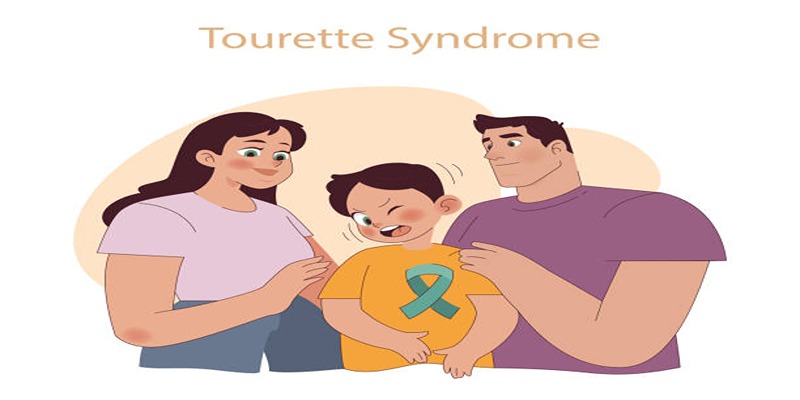The Basics of Tourette Syndrome: Symptoms, Causes, and Treatment
Tourette Syndrome (TS) is one of the neuropsychiatric disorders characterized by the presence of multiple tics. These tics may comprise twitches such as eye blinking, throat clearing or other forms of more complex movements which may be rhythmic or involve gestural organization or verbal organization or repeated phrases. Usually developing within childhood, TS manifests between 5 and 10 years of age. It has not been recognize why TS occurs, but the researchers opine that this condition results from a group of genes and environmental factors that lead to abnormal brain development.
What is Tourette Syndrome?
Tourette Syndrome also known as TS – is a neurological disorder which became labeled in the late 1800’s after a Frenchman known, as Dr. de la Tourette. D Troubled by repetitive involuntary movements and vocalizations, called tics, it can greatly differ in terms of kind and severity. These symptoms are always seen from childhood preferably between the ages of five and ten years.
TS affects individuals in diverse ways—some experience mild, barely noticeable tics, while others face more severe symptoms that can significantly impact daily life. Though the exact prevalence remains uncertain, research estimates that approximately 1 in 100 children may have TS, with boys being 3 to 4 times more likely to be diagnosed than girls.
Tourette Syndrome Symptoms:

Tourette Syndrome is characterized by the presence of motor and vocal tics, which are involuntary, repetitive movements or sounds. These tics fall into two main categories:
1 .Motor Tics
Motor tics refer to sudden, repetitive physical movements. Common examples include:
- Eye blinking
- Facial grimacing
- Shoulder shrugging
- Head jerking
Motor tics can range from simple, isolated movements, such as twitching, to more complex actions involving multiple muscle groups.
2 .Vocal Tics
Vocal tics are involuntary sounds or noises. Examples include:
- Throat clearing
- Sniffing
- Grunting
- Repeating words or phrases
In rarer cases, individuals may experience coprolalia, which involves the involuntary utterance of socially inappropriate or offensive words.
Patterns and Variability
- Frequency and Intensity: Tics can vary widely in how often they occur and their severity.
- Triggers: Stress, excitement, or fatigue may intensify symptoms.
- Waxing and Waning: Symptoms often fluctuate over time, commonly worsening during childhood and improving with age. While some individuals see a significant reduction in symptoms over time, others may continue to experience persistent tics into adulthood.
Causes of Tourette Syndrome:
The cause of Tourette Syndrome (TS) is still a mystery, but researchers believe it’s shaped by a mix of genetics, brain chemistry, and environmental influences.
1 .Genetic Factors
Tourette Syndrome often runs in families, suggesting a hereditary component. While no specific genes have been definitively identified, studies indicate a strong genetic influence on its development.
2 .Brain Structure and Function
Abnormalities in key brain regions, such as the basal ganglia, frontal lobes, and cortex, have been linked to TS. These areas play critical roles in motor control, decision-making, and behavioral regulation, suggesting their involvement in the condition.
3 .Neurotransmitter Imbalances
Imbalances in neurotransmitters, particularly dopamine and serotonin, are believed to contribute to the onset and severity of tics associated with TS. These chemical disruptions can affect communication between brain regions.
4 .Environmental Factors
Certain prenatal and early-life factors may increase the likelihood of developing TS. These include low birth weight, maternal stress during pregnancy, or exposure to specific infections during critical developmental periods.
Tourette Syndrome: Diagnosis
Diagnosing Tourette Syndrome (TS) requires a detailed clinical evaluation, typically conducted by a neurologist or psychiatrist with expertise in movement disorders.
1. Diagnostic Criteria
According to the Diagnostic and Statistical Manual of Mental Disorders (DSM-5), the following criteria must be met to diagnose TS:
- Both motor and vocal tics are present (though not necessarily at the same time).
- Symptoms persist for more than one year.
- The onset occurs before the age of 18.
- Symptoms cannot be explained by another medical condition or substance use.
2. Additional Evaluations
To ensure an accurate diagnosis, healthcare providers may conduct the following assessments:
- Family History: To explore any genetic predisposition to TS or related conditions.
- Neurological Examination: To rule out other possible neurological disorders.
- Behavioral Assessments: To assess how tics influence daily activities and quality of life.
Treatment Options for Tourette Syndrome:

Although there is no cure for Tourette Syndrome (TS), a variety of treatment strategies can effectively help manage symptoms and improve quality of life. Here’s an overview of the most common approaches:
1 .Behavioral Therapies
- Comprehensive Behavioral Intervention for Tics (CBIT): This structured therapy teaches individuals to identify and manage tics through techniques like habit reversal training, helping them gain better control.
- Cognitive-Behavioral Therapy (CBT): Designed to address emotional challenges, such as anxiety, that can worsen TS symptoms, CBT provides tools to manage stress and emotional triggers.
2 .Medications
For more severe cases, medications may be used to reduce tics or treat related conditions. Common options include:
- Antipsychotics: Help regulate neurotransmitter activity to minimize tics.
- Alpha-adrenergic Agonists: Often prescribed for managing symptoms associated with ADHD.
- Selective Serotonin Reuptake Inhibitors (SSRIs): Used to alleviate anxiety or obsessive-compulsive tendencies.
3 .Educational Support
Children with TS often benefit from individualized education plans (IEPs) tailored to their unique needs. Providing teachers and classmates with accurate information about TS can also help create an inclusive, supportive learning environment.
4 .Lifestyle Modifications
Adopting a healthy lifestyle is key to managing Tourette Syndrome. Helpful strategies include:
- Stress Management: Incorporating relaxation techniques, such as mindfulness, deep breathing, or yoga, to reduce tic triggers.
- Regular Exercise: Physical activity can enhance overall well-being and help alleviate stress.
- Adequate Sleep: Ensuring consistent, quality sleep to minimize the likelihood of tic exacerbation.
5 .Surgical Interventions
In rare and severe cases where other treatments prove ineffective, Deep Brain Stimulation (DBS) may be an option. DBS involves surgically implanting electrodes in specific areas of the brain to regulate abnormal activity and reduce severe tics.
Living with Tourette Syndrome:
Living with Tourette Syndrome (TS) comes with a unique set of physical and emotional challenges, but with the right strategies, individuals can thrive. Effective management often involves a collaborative, multidisciplinary approach, bringing together healthcare providers, educators, therapists, and family members to meet the distinct needs of each individual.
Healthcare professionals can help manage tics through medication or behavioral therapies, while educators can create a supportive learning environment by implementing tailored accommodations. Family members play a vital role in offering emotional support, understanding, and encouragement.
Conclusion:
Tourette Syndrome is a lifelong condition that, while challenging, can be effectively managed with the right strategies and support systems. Gaining a deeper understanding of its symptoms, causes, and treatment options is crucial for providing meaningful assistance to individuals with TS and their families. By fostering education and raising awareness, we can combat stigma and create a more accepting environment where those with TS feel understood and supported.












